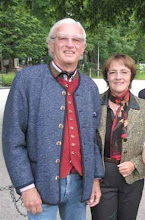As the UN Mission in Sierra Leone (UNAMSIL) comes to a close at the end of this year, it may serve as a model for successful peacekeeping, as well as a prototype for the UN’s new emphasis on peacebuilding.
- From UNAMSIL: A Success Story in Peacekeeping, from “End of Mission Press Kit”, December 2005, http://www.un.org/en/peacekeeping/missions/past/unamsil/Overview.pdf
A book review, by Jamie Arbuckle, for Peacehawks:
Operation Barras: the SAS Rescue Mission, Sierra Leone 2000, by William Fowler, Cassell, London, 2004. 211 pp, $9.95 (pb)
Introduction
In the summer of 2000 things just couldn’t have been much worse for the United Nations Mission in Sierra Leone (UNAMSIL). Since February, 1998, nearly 650 persons – peacekeepers, relief workers, priests, nuns, diplomats, and normal people whose luck had run out – had been kidnapped, and 19 of them had been murdered. 575 of those taken were Blue Berets, the equivalent of a whole battalion. By late summer of 2000, about 600 persons had been released, including all of the UN peacekeepers. But about 50 were still captive and, when 11 British soldiers were seized on 25 August, things were getting pretty serious. Yet, less than two years later, the civil war had ended (and seems to have stayed that way), and in 2003 the Kimberly Process virtually ended traffic in the “blood diamonds”, which had been used to finance the rebels. In 2004 the disarmament of the rebel factions was completed and a war crimes tribunal was convened. At the end of 2005, just five years after that nadir of 2000, the peacekeeping mission was being phased out to a peacebuilding mission, and the close-out briefings in New York were presenting this as the poster child of a successful mission.
What happened to make such a difference so quickly to such a dismal situation? Well, a lot of things, but the main thing was that about 600 British soldiers happened, and they made most of that difference in a matter of a few short weeks. This book, Operation Barras: the SAS Rescue Mission: Sierra Leone 2000, by William Fowler, is about what and why and how they did all that. Fowler seems well equipped and prepared for this work: he has been writing on defense policy and technology issues since 1972, and his writings have appeared in international defense magazines. He is the author of a previous book on the Commando action at Dieppe in 1942. He has been a long-serving officer with the British Reserve Army, and served in the first Gulf War.
It must be said at the outset that we found it difficult to determe just what was the author’s central thesis – why was this book written? The author tells us only that “This book is about a post-Cold War African conflict.” We thought that Operation Palliser was about much more: we thought it was a striking example of how economical and decisive military action might be, and indeed should be – but commonly is not, and the contrasts between Operation Palliser and UNAMSIL needed more consideration than they have been given – in this book and generally. Throughout this review, then, we will be drawing lessons and conclusions which the author did not – which is just why we thought this review was necessary.
Thursday, March 25, 2010
Subscribe to:
Comments (Atom)

